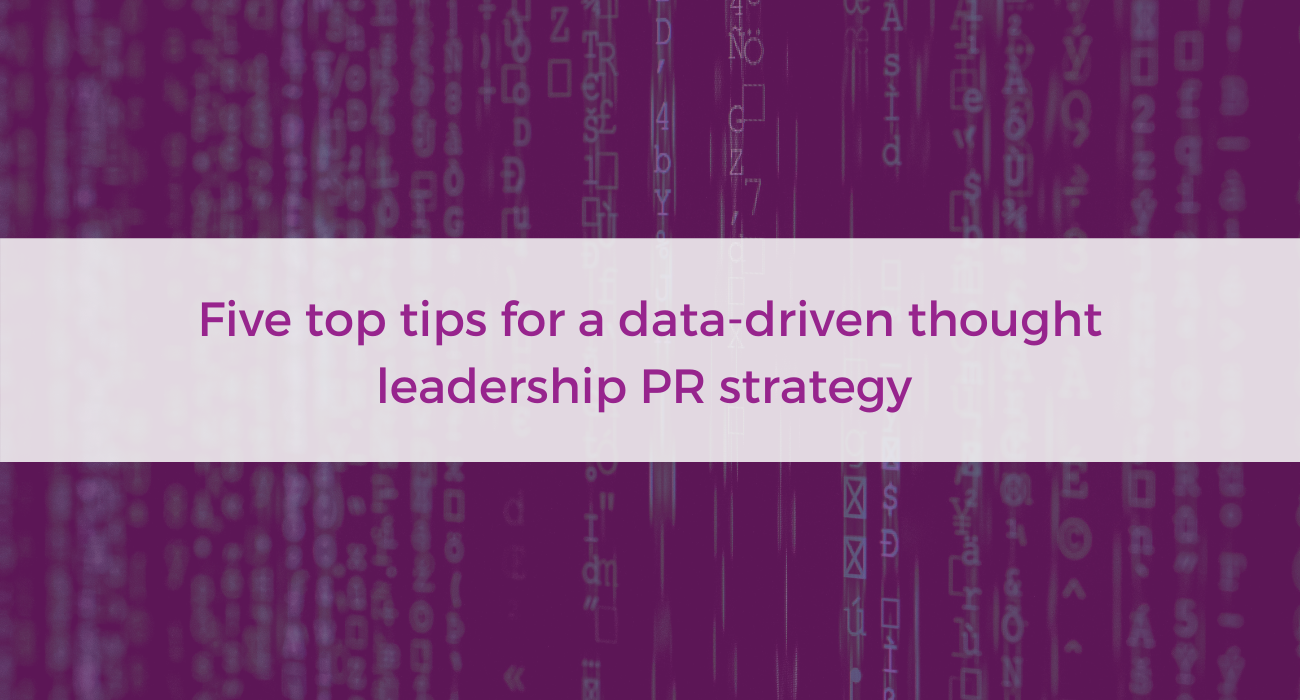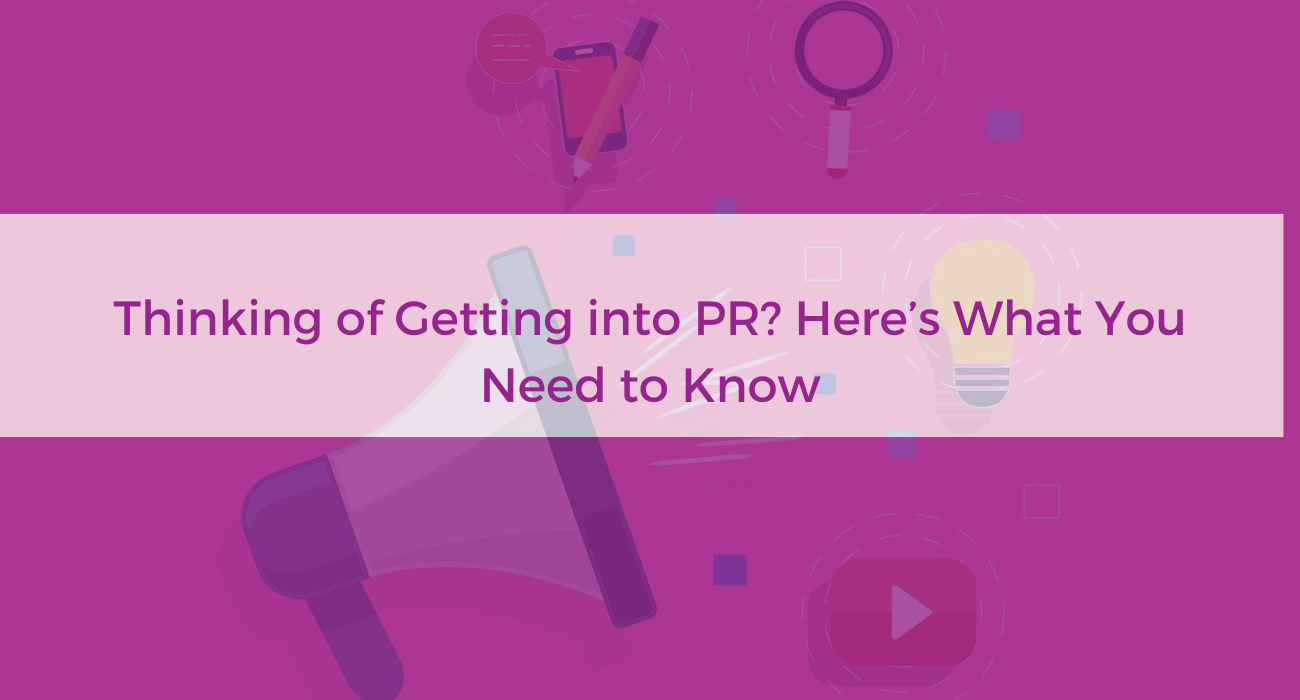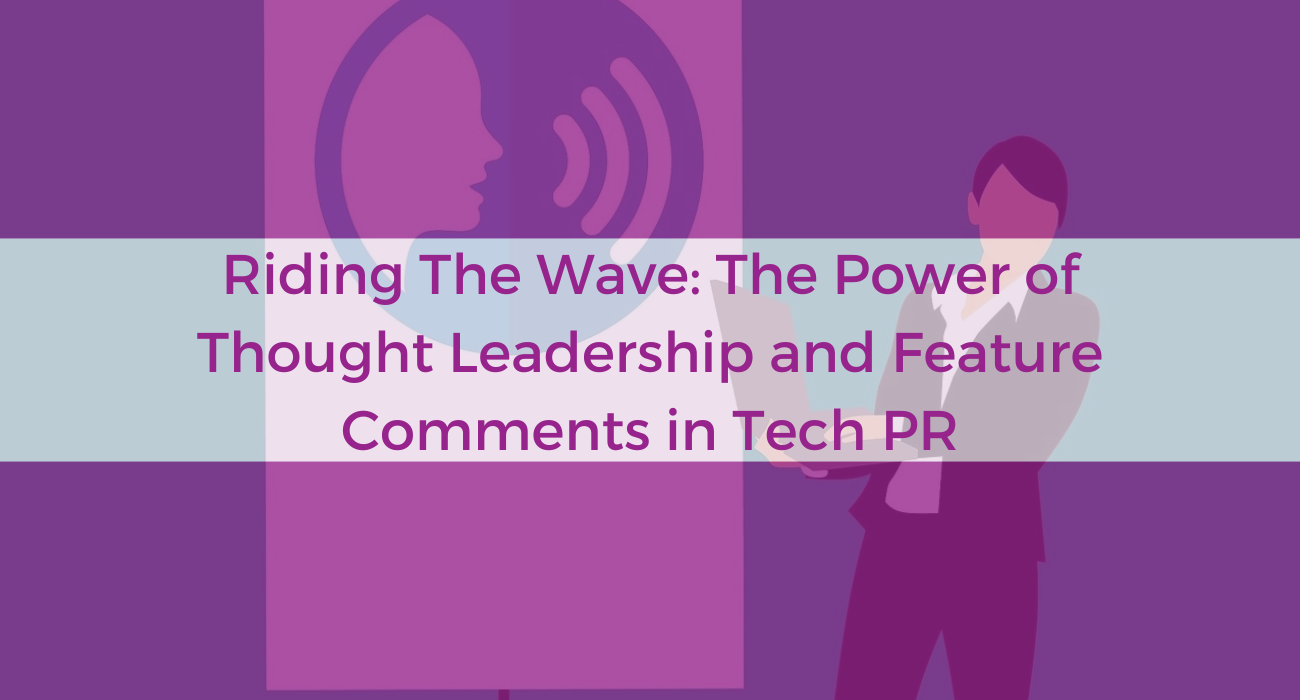
Five top tips for a data-driven thought leadership PR strategy
Thought leadership is essential for any B2B PR strategy. We’ve talked about thought leadership in other blogs – from how to engage senior leaders in thought leadership to why you can’t just rely on news in a B2B PR campaign.
In any PR campaign, thought leadership content is used to build trust and show expertise in a particular area – whether that’s healthcare, finance, retail or IT. It speaks directly to the reader about the issues they’re facing, giving them a reason to pick up the phone and get in touch to find out more.
So where does data fit into a PR thought leadership strategy? Data makes any thought leadership argument far more concrete, believable and trustworthy. In fact, research shows that data is the most sought-after addition to thought leadership content. An opinion backed up by data is very hard to ignore, in turn, increasing engagement and driving readers into the sales funnel. And, with so much content for readers to choose from, with an abundance of blogs, soundbites, whitepapers, reports and podcasts, there is a growing need to make this content stand out from the crowd, and adding data is the perfect way to do that.
But how can you make your data-driven thought leadership content a success? We’ve got five top tips to get you started.
Establish a clear point of view and clearly define your go-to-market message
Get your key stakeholders involved to make sure the messaging will support each function and department within the organisation. Ask for feedback from existing customers to make sure your messaging is on track!
Be consistent!
Don’t just publish one piece of content and leave it at that. Create a series of blogs, back it up with a whitepaper and record a podcast on the same theme to provide consistency and reach your audience across a range of platforms. Keep the data you’re using fresh and revisit it regularly for updates.
Consider conducting new research, as well as using existing data in the market
New research will speak specifically to the issue you’re talking about, and will also be extremely interesting to both trade and national media who will be looking to get fresh research hot off the press. Consider conducting an annual report or signing off research that looks into a specific event or change in the industry.
Pick the right research method
There are a range of research methods to choose from, and it all depends on what you want the outcome to be. Define your audience for the research and then decide how best to reach them. Will a consumer-focused survey be best, or do you want in-depth interviews with top CIOs? Consider which methods will work best to produce your data-driven thought leadership content.
Act quickly
Things can change in an instant, so if you’re looking to conduct new research to compliment your thought leadership strategy, act fast. Always make sure to stay up to date with the latest trends and check the news regularly to ensure nothing will have a detrimental impact on your research findings or make it out of date. Also, make sure to look around in the market to confirm there isn’t existing research on the same subject. If there is, ensure you can put a different spin or twist on it, or it will quickly lose relevance.
So there you have it! Are you looking to getting started with your data-driven thought leadership strategy? Get in touch, we’d love to help! We have great partnerships with research houses and we’d love to show you examples of how we’ve implemented successful B2B thought leadership campaigns for our clients.





Pingback: Daily PR Brief - Fri 04/09/21 - ITK Blog
April 9, 2021 6:31 pm